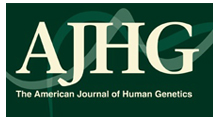Refugees from the Ice Age
Tue, 08 May 2012 10:03:00 BST
Huddersfield scientist heads project which unearths new data on the repopulation of Europe after the big freeze

SCIENTISTS have used DNA analysis to gain important new insights into how human beings repopulated Europe as the Ice Age relaxed its grip.
Dr Maria Pala (pictured), who is based at the University of Huddersfield – now a key centre for archaeogenetics research – is the lead author of an article in the latest issue of the American Journal of Human Genetics which shows how the Near East was a major source of replenishment when huge areas of European territory became habitable again, up to 19,000 years ago.
Until the new findings, it was thought that there were two principal safe havens for humans as the Ice Age, or Last Glacial Maximum, descended, approximately 26,000 years ago. They were a “Franco-Cantabrian” area roughly coinciding with northern Spain/southern France, and a “Periglacial province” on the Ukrainian plains.

Now Dr Pala and her colleagues have greatly added to this picture by analysing large quantities of mitochondrial DNA from Europeans who belong to two major lineages – who share a common genetic ancestor – named J and T. It is known that these haplogroups originated in the Middle East and until the latest research it was thought that they migrated to Europe in the Neolithic age, approximately 9,000 years ago.
The research project outlined in the American Journal of Human Genetics presents evidence thathumans belonging to the J and T haplogroupsactually migrated to Europe much earlier than previously believed, as the Ice Age drew to a close.
“The end of the Last Glacial Maximum allowed people to recolonise the parts of Europe that had been deserted and this expansion allowed increase of human populations,” says Sardinian-born Dr Pala, who begun research into the topic while at the University of Pavia in Italy.
She later relocated to the UK and is now a Senior Research Fellow at the University of Huddersfield, where archaeogenetics research – in newly-equipped laboratories – is headed by
Professor Martin Richards, a leader in a field of science which combines archaeology with genetics to learn about the early history of humans and how they colonised the planet.
In addition to purely scientific challenges and discoveries, Dr Pala believes that archaeogenetics has important lessons to teach humanity.
“It helps us to revaluate the perception of our identity. We are highly focussed on identifying ourselves as Italians, British or whatever, but by analysing DNA we discover that originally, not such a long time ago, we came from a common source.”
- The article Mitochondrial DNA Signals of Late Glacial Recolonization of Europe from Near Eastern Refugia by Maria Pala and others, appears in the May 2012 edition of The American Journal of Human Genetics.







